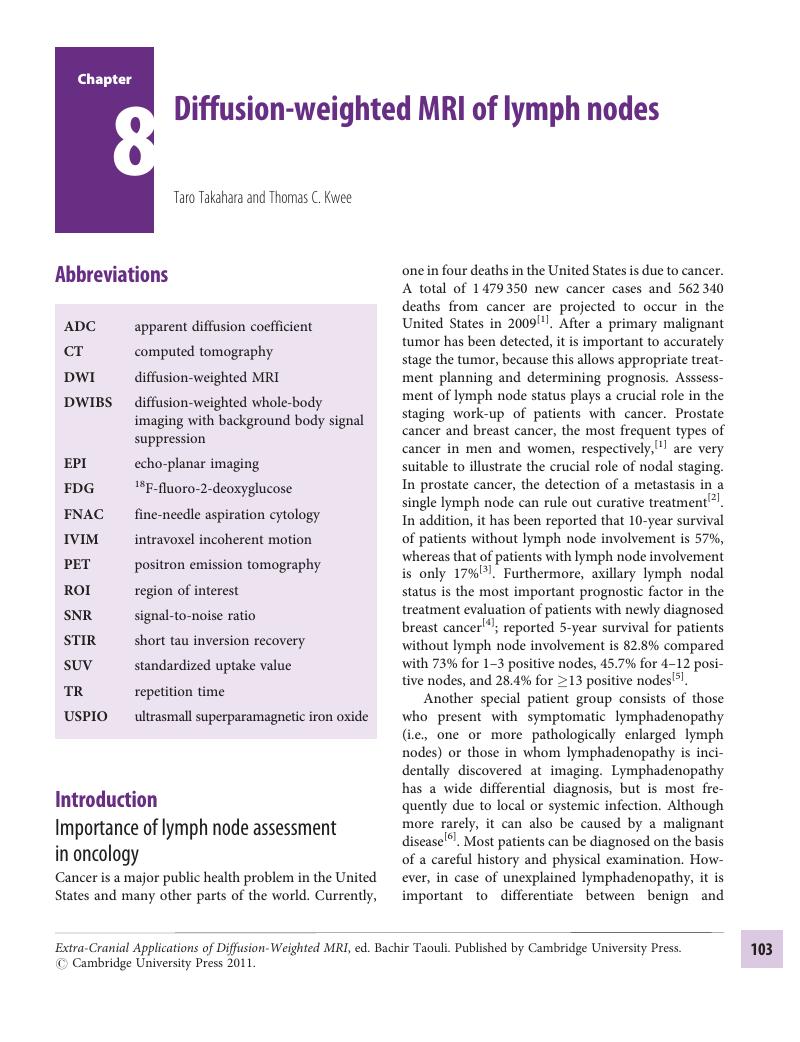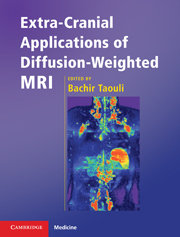Book contents
- Frontmatter
- Contents
- List of contributors
- Preface
- 1 Basic physical principles of body diffusion-weighted MRI
- 2 Diffusion-weighted MRI of the liver
- 3 Diffusion-weighted MRI of diffuse renal disease and kidney transplant
- 4 Diffusion-weighted MRI of focal renal masses
- 5 Diffusion-weighted MRI of the pancreas
- 6 Diffusion-weighted MRI of the prostate
- 7 Breast applications of diffusion-weighted MRI
- 8 Diffusion-weighted MRI of lymph nodes
- 9 Diffusion-weighted MRI of female pelvic tumors
- 10 Diffusion-weighted MRI of the bone marrow and the spine
- 11 Diffusion-weighted MRI of soft tissue tumors
- 12 Evaluation of tumor treatment response with diffusion-weighted MRI
- 13 Diffusion-weighted MRI: future directions
- Index
- References
8 - Diffusion-weighted MRI of lymph nodes
Published online by Cambridge University Press: 10 November 2010
- Frontmatter
- Contents
- List of contributors
- Preface
- 1 Basic physical principles of body diffusion-weighted MRI
- 2 Diffusion-weighted MRI of the liver
- 3 Diffusion-weighted MRI of diffuse renal disease and kidney transplant
- 4 Diffusion-weighted MRI of focal renal masses
- 5 Diffusion-weighted MRI of the pancreas
- 6 Diffusion-weighted MRI of the prostate
- 7 Breast applications of diffusion-weighted MRI
- 8 Diffusion-weighted MRI of lymph nodes
- 9 Diffusion-weighted MRI of female pelvic tumors
- 10 Diffusion-weighted MRI of the bone marrow and the spine
- 11 Diffusion-weighted MRI of soft tissue tumors
- 12 Evaluation of tumor treatment response with diffusion-weighted MRI
- 13 Diffusion-weighted MRI: future directions
- Index
- References
Summary

- Type
- Chapter
- Information
- Extra-Cranial Applications of Diffusion-Weighted MRI , pp. 103 - 118Publisher: Cambridge University PressPrint publication year: 2010



